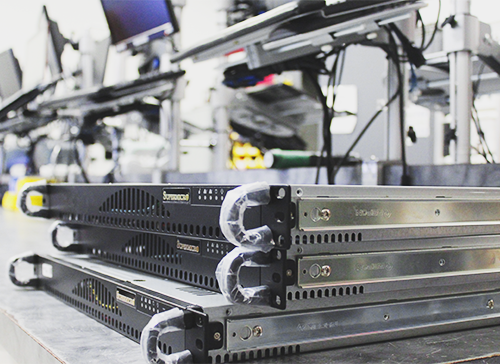What exactly does Tier 4 mean? What separates it from lower tiers? And when should your business consider deploying in a Tier 4 facility? Let’s take a deeper look.
How HostDime Achieves Industry-Leading PUE for Energy Efficiency
Power Usage Effectiveness, or PUE, is one of the most important metrics in evaluating the efficiency of a data center. Discover how HostDime achieves a low PUE through energy-efficient design, cooling, and purpose-built data centers.
12 Critical Questions to Ask a Data Center Provider Before You Commit (2025 Guide)
Looking for servers, colocation, or cloud infrastructure? Ask these 12 essential questions to choose the right data center provider. Don’t risk downtime, security, or performance, and get informed before you sign.
Colocate at an IXP: Faster, Cheaper, Smarter
Colocating at an Internet Exchange Point (IXP) improves network speed, lowers latency, and cuts transit costs by allowing direct peering between providers. HostDime’s growing ecosystem of carrier-neutral IXPs in Mexico, Colombia, and Florida offers smarter, faster, and more resilient interconnection for modern workloads like AI, cloud, and edge computing.
Inside HostDime’s Green Data Centers: Innovation Meets Sustainability
Happy Earth Day! Today is more than just a celebration of our planet—it’s a global call to action. At HostDime, we’ve been answering that call for over two decades by engineering our green data centers with sustainability at the core.
The Average DDoS Attack Costs $234K, Here’s How to Stop It
DDoS protection is no longer an optional add-on but a fundamental component of a business’s cybersecurity posture. HostDime is here to help, with one of the most DDoS protected networks in the infrastructure industry.
The Real ROI of Moving to a Tier IV Data Center
Tier IV data centers offer true fault tolerance and just 26 minutes of annual downtime, making them the gold standard for mission-critical enterprises looking to gain unmatched reliability, long-term ROI, and peace of mind.
Why Enterprises are Deploying Kubernetes on Bare Metal
Kubernetes serve as an incredibly efficient platform for deploying large-scale workloads, particularly on bare metal servers. We explore the many benefits and use cases of deploying Kubernetes on bare metal.
The Future of Bare Metal in a Cloud-Driven World
In an era where cloud computing dominates IT strategies, bare metal servers remain a critical component of high-performance infrastructure. As the demand for computing power continues to surge, businesses must rethink how they balance cloud-native solutions with dedicated hardware.
The 2025 Data Center and Cloud Conferences Directory
Enjoy a hand-picked directory of the best 2025 cloud computing and data center conferences, trade shows, and events relevant to this great industry of ours.










